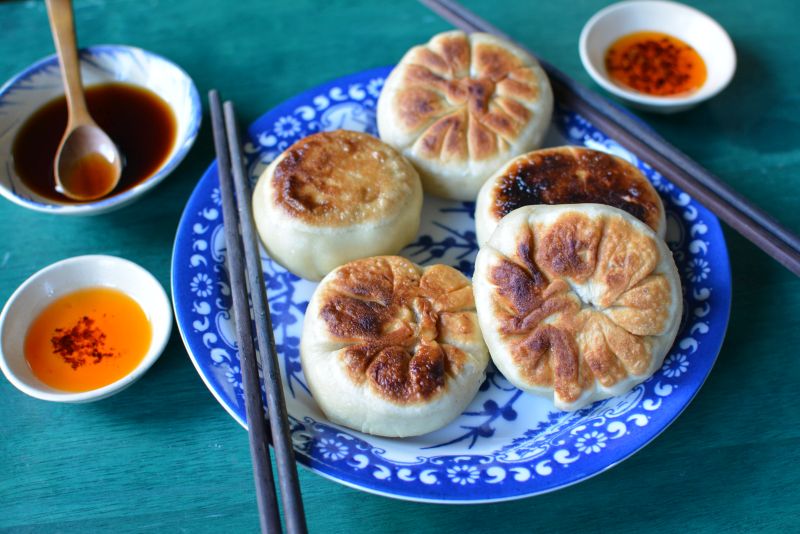
Meet xian bing, pan-fried dumplings the size hockey pucks. They are shaped like traditional bao but the dough does not contain any leavening agent.
I fell for them years ago at a spot called the Beijing Pie House in Monterey Park, a major hub for excellent Chinese food located east of Los Angeles. The Beijing Pie House made many kinds of xian bing in addition to other little snacks like noodles, salads, and noodle soups. My husband and I would over order to try various kinds of xian bing. There was beef, pork, lamb and vegetarian. The juicy hot dumplings would often scald our mouths, but they were worth the minor injuries. Chile oil, soy sauce, and vinegar were the accompaniments. (Bing literally means pie but it denotes many doughy foods in the Chinese repertoire.)
We went to BPH four or five times and I tried making xian bing at home but I could never figure out how to get juicy results. I was cooking them like pot stickers -- my fry-steam-fry method. But it turns out they are basically fried, though I found myself adding a little splash of water toward the end because I like a more tender finish. The frying method is how the dumplings retain their cylindrical shape and juice-squirting interior (eat carefully!) during cooking.
I gleaned those tips and more from food journalist and teacher Hsiao-Ching Chou's new cookbook, Chinese Soul Food. It's a fun book filled with homey, rustic dishes that are doable. The xian bing were doable enough for me to make them twice last weekend -- while I was prepping and packing for a five-day photo shoot. I'm not crazy, but rather just a bit obsessed with xian bing.
To get a little more information on xian bing and the recipe, I emailed Hsiao-Ching a few questions:
What are the origins of xian bing? They are northern Chinese? Yes, it’s a northern Chinese food. The name is a generic term for “filled pastry.” There are many variations and styles, depending on the cook’s preference.
Do you have any particular attachment to xian bing? How does it express "Chinese soul food”? It’s like a pot sticker on steroids, because it has a crispy double-crust, a juicy filling, and the dough is made to have layers. It isn’t a fancy food and, in fact, is a street food. Anything that is humble and so delicious that it cuts to your core upon the first bite is a Chinese soul food.
The formation of the dough is really interesting. How do you think that method affects the overall dumpling? The method of rolling the dough helps to create layers in the pastry for texture and flavor. There isn’t enough fat in the dough to make it flaky, but the layering gives it great texture. Some versions call for spreading the filling on the dough and rolling it into the spiral - kind of like a cinnamon roll.
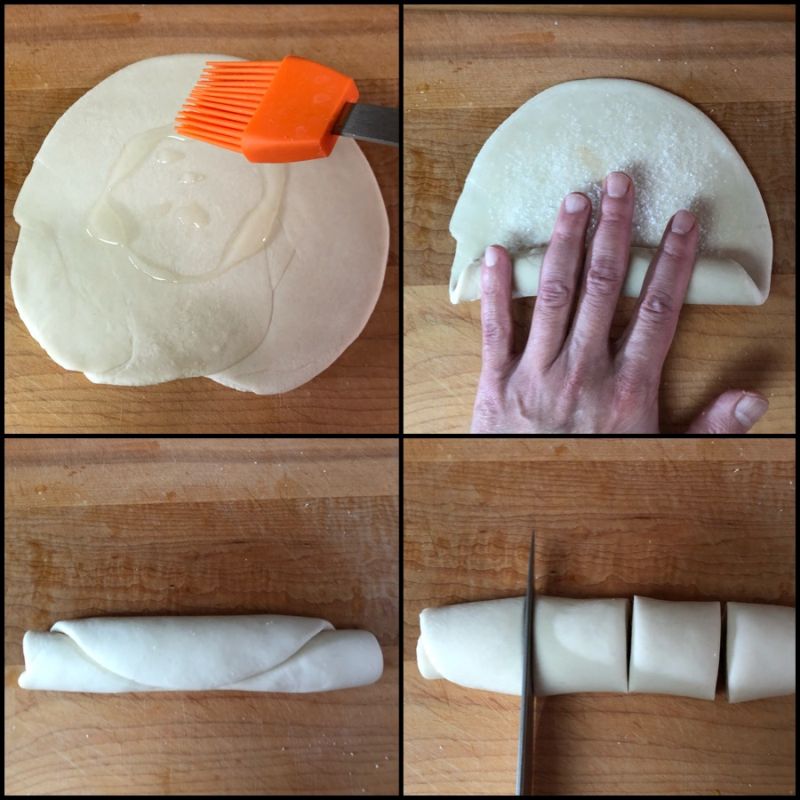
Do you recommend a particular kind of ground beef? Is fattier better? Fattier beef is always preferred. The marbling helps to keep the filling from drying out.
If people are beef averse, would pork or ground dark meat chicken work? Pork, chicken, lamb — any meat that you prefer.
Ugh, what about turkey? [I am not a big ground turkey lover.] You could do turkey, but maybe add some sautéed leeks to it to add some succulence.
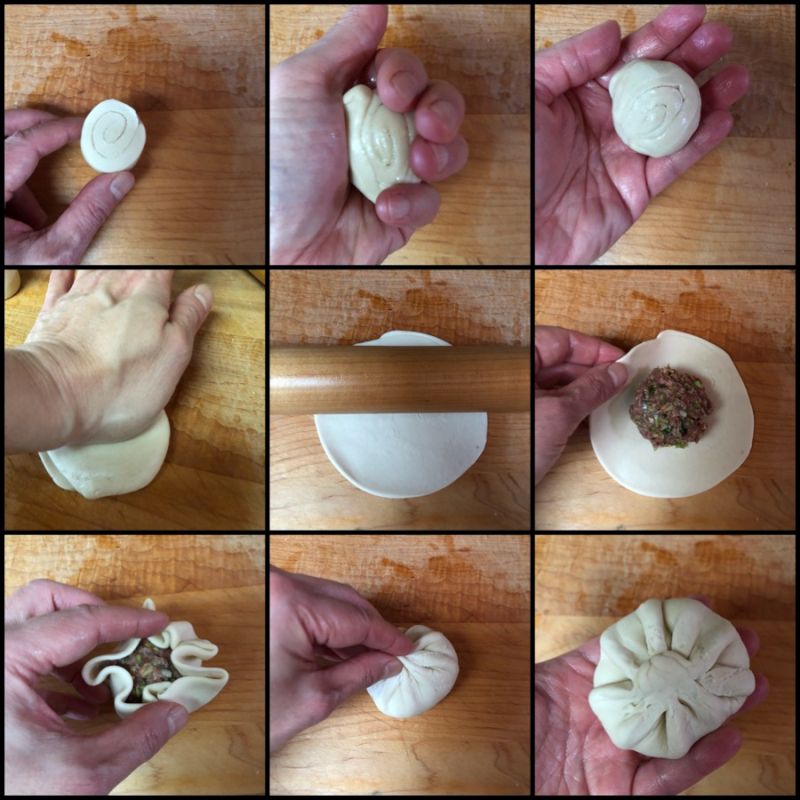
After rolling the dough pieces into rounds, Hsiao-Ching employs an unfussy method of shaping the dumplings (above). Just gather things up. You can do a pretty satchel shape like what you'd see in a Shanghai soup dumpling, or just gather up the dough and call it a day. The result is rustic and hearty.
The subtitle of Hsiao-Ching's book is "A Friendly Guide for Homemade Dumplings, Stir-Fries, Soups, and More". Chinese Soul Food lives up to that promise.
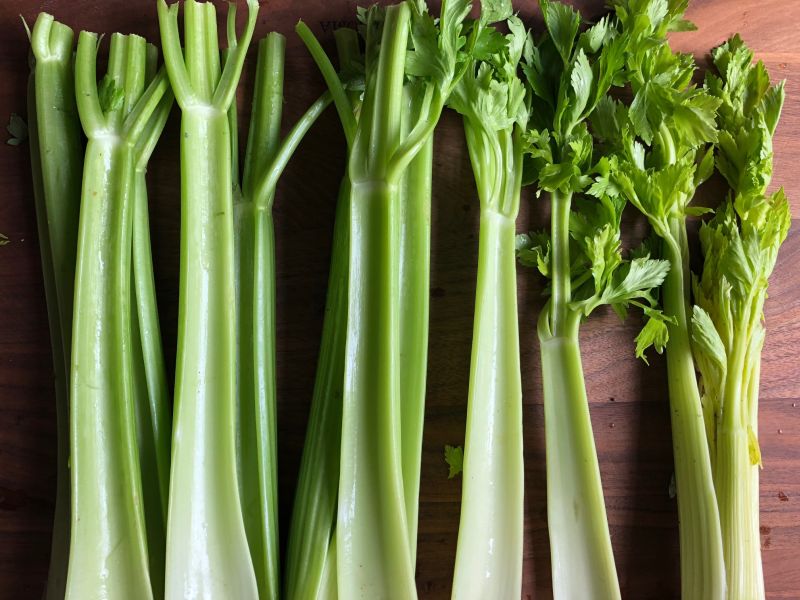
Celery Heart Note >> Boldly-flavored Chinese celery (think a cutting-type of celery) is often used for filling like this one. Hsiao-Ching smartly suggests the hearts of regular celery and a substitute. If your celery is mild tasting, punch it up with some ground celery seed.
And, yes, xian bing is the perfect excuse to get the homemade chile oil out! Enjoy.
Beef and Celery Hearts Meat Pies (Xian Bing)
Yield 8 to 12
The cooking time varies according to your skillet and burner size. On a regular 9,000 BTU burner and nonstick skillet, mine took 4 to 5 minutes per side. At the end, if the wrapper seems uncooked or too stiff, add a splash of water, partially or fully cover and let steam-fry to soften and hydrate the wrapper. Then raise the heat to fry the bings to a crispness.
I found that about 9 ounces (generous 1 ¾ cups) of Gold Medal flour was great for the dough. Depending on the flour, you may need to add even more water by the tablespoon to hydrate the flour, Hsiao-Ching advises. Look to her visual and tactile cues as your guide.
Chinkiang vinegar or a 1:1 mixture of balsamic and cider vinegar is great with these dumplings, too! The tang cuts their richness.
Ingredients
- 2 cups all-purpose flour
- ½ cup plus 1 tablespoon hot tap water (about 110 to 115 degrees F), divided
For the filling:
- ½ pound ground beef
- ½ cup finely chopped celery hearts (innermost yellow stalks)
- 2 stalks green onions, finely chopped
- 1 tablespoon plus 1 ½ teaspoons soy sauce
- ¼ teaspoon white pepper powder
- 2 tablespoons plus 1 teaspoon vegetable oil, divided
- 1 teaspoon kosher salt
- Soy sauce, for serving
- Chili oil or your favorite chili sauce, for serving
Instructions
- Put the flour in a medium bowl. Gradually add ½ cup of the water while mixing with a fork or spatula. Once the flour starts to clump, start gathering the pieces with your hand to make a ball. If the dough feels too dry, work water by the 1 tablespoon. The dough should feel tacky but it shouldn’t stick to your fingers. Knead the dough for 1 minute. Cover the bowl loosely with plastic wrap, and set aside to rest while you make the filling.
- To make the filling, in a medium bowl, put the beef, celery, onions, soy sauce, and pepper, and mix well. Set aside.
- Knead the dough for 1 to 2 minutes more, or until smooth. Divide the dough in half. Roll out one piece of dough into a circle about ¼ inch thick. The diameter is not important. Brush ½ teaspoon of the oil on the surface.
- Sprinkle ½ teaspoon of the salt across the dough. Starting from the edge closest to you, roll the dough into a tube. This will help to create some layers.
- Cut the tube into four equal pieces. Set aside. Repeat with the other half of the dough.
- Take a dough piece and gently press it into a ball. Roll it out to about 4 inches in diameter, like a mini pizza. Add 1 heaping tablespoon of filling in the center. Seal the dough around the filling, pinching the edges together, then gently press the ball into a puck-like shape roughly 2 ½ inches in diameter and ¾ to 1 inch thick. Repeat with the remaining pieces of dough.
- Preheat an 8- to 10-inch cast iron skillet or a nonstick pan over medium-low
- heat for about 1 minute. Add 1 tablespoon of the oil per four bings. If you can
- fit all eight in a single pan, great; if not, cook them in batches. Let the oil heat for about 30 seconds, or until shimmering. Add the bings but do not let the sides touch. They won’t expand, but you don’t want them to stick together. Cook, covered, for 3 to 4 minutes per side, or until both sides are
- crusty and the color is a rich golden brown. If they start to brown too quickly, adjust the heat. Serve with soy sauce and chili oil.
Notes
*(c)2018 by Hsiao-Ching Chou . All rights reserved. Excerpted from Chinese Soul Food by permission of Sasquatch Books.
Courses Breakfast, lunch or dinner
Cuisine Chinese













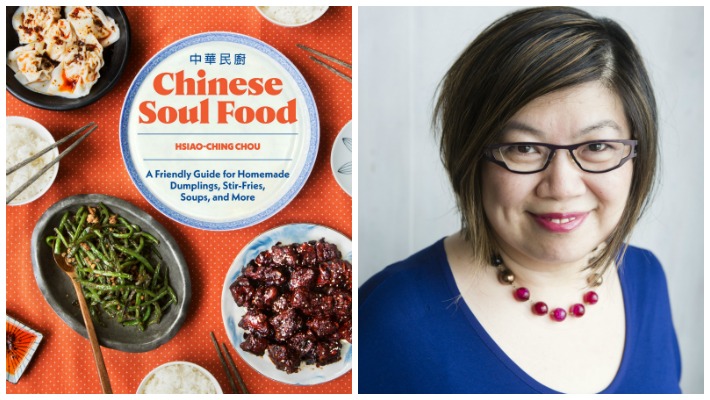
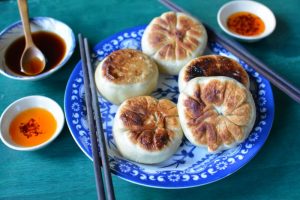




Elizabeth Andoh says
Love these! Celery is beastly expensive in Japan (a single stalk costs the equivalent of $2) and I always opt for the heart with lots of leafy greens. I use the leaves in all sorts of dumplings (also in miso soup) but its the slightly chewy-but-crisp texture of these xian bing buns that make them my favorite.
Andrea Nguyen says
Hooray! Most people discard the celery leaves but I love them, too!
Heather M. Whipple says
Can I use different meat for this such as chicken
or seafood with mushrooms & With a sauce mixed with the meat? Pleased let me know. By e-mailing me at
[email protected]
Andrea Nguyen says
Sure! It should be fine.
Karina says
Could I freeze these? If yes, would I freeze before I pan fried or after? If I do cook them first then freeze how do I reheat them? Thank you for your time!
Andrea Nguyen says
I'd freeze these before cooking. Treat like you would a pot sticker. I think you'll be fine that way. Thanks for making them up!